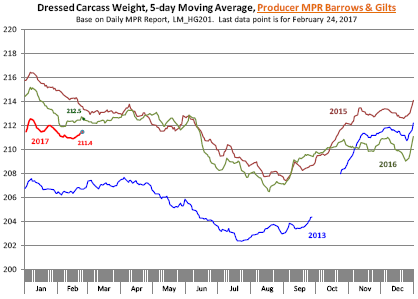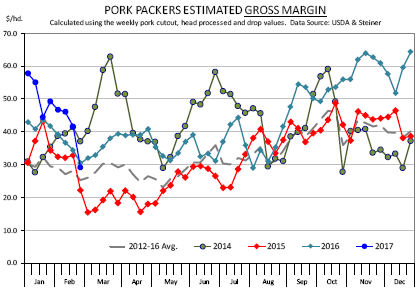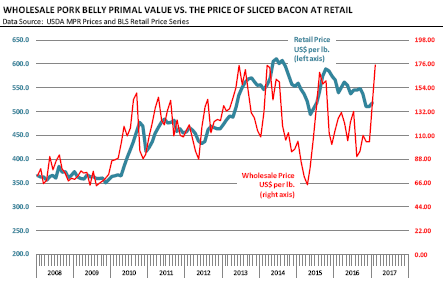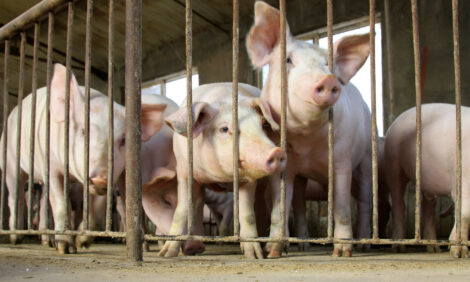



CME: Slight Pullback in Hog Futures
US - Hog futures have pulled back a bit in the last few trading sessions as market participants focus both on short term cash price considerations and the potential for pork demand going into the spring and summer, according to the Steiner Consulting Group, DLR Division, Inc.Hog slaughter last week was 2.280 million head, 2.6 per cent higher than the previous year but substantially lower than what was implied by the last Hogs and Pigs report. Indeed, slaughter in each of the last four weeks has undershot the projected target for this period.
You will remember that the last Hogs and Pigs report pegged the inventory of hogs weighing between 120 and 179 pounds to be +4 per cent higher than the previous year and the inventory of hogs between 50‐119 pounds to be +4.5 per cent larger than the previous year.
But slaughter in the past four weeks has been (in order) +3.6 per cent, +3.2 per cent, +2.7 per cent and +2.6 per cent. The miss is big enough to make us question whether the last inventory count actually overstated the number of hogs expected to come to market during the winter and spring months.
It could be that slaughter numbers have been lower than expected because tighter margins no longer incentivize packers to run as hard as possible. Saturday slaughter in the last four weeks has averaged 153,000k head compared to 134,000 head a year ago.

Because last year weekday slaughter was already near capacity, we would expect a much larger Saturday slaughter in order to keep up with the larger supplies. At this point it does not appear producers have fallen behind in their marketings (another reason for thinking the inventory report overstated the case). The average weight of barrows and gilts currently is hovering at 211.4 pounds compared to 212.5 pounds for the same period a year ago.
The downtick in packer margins is real and could be even worse if not for a continued improvement in by‐product values. For week ending 25 February, we estimate the gross pork packer margin at $29.17/head, slightly lower than it was at the same time last year and possibly in negative territory depending on your assumptions on operating costs.

The meat margin was $9.4/head compared to $16/head a year ago. The revenue side is calculated using the weekly reported pork cutout, which uses domestic wholesale beef sales. In the case of beef, we have shifted to using the comprehensive cutout to calculate gross margins because it captures both domestic and export sales. Hopefully at some point next year we will be able to get a pork comprehensive cutout as well.
USDA is already planning on this but their budgets keep getting smaller not bigger and there are so many hours in the day for their existing staff. But we digress. Bottom line is that as pork packer margins get squeezed they will likely tend to slow down slaughter.
The big unknown at this point is whether the recent divergence of slaughter numbers from the December inventory report is temporary or if market participants should price a smaller supply increase for Q2. Keep in mind that the last USDA pork supply/demand table had pork production in Q2 up over 6 per cent compared to the previous year.
Another source of extreme uncertainty in the pork market is the direction in the belly market and export outlook. Belly prices in recent days have been quite volatile. We had an almost 25 cent break in price in one day, followed by some recovery but then another 13 cent decline yesterday. The attached chart shows the relationship of retail bacon prices and the price of wholesale bellies.

One thing that stands out is the fact that as retailers wind down bacon features and prices climb to what we think is the new standard retail price of $5.99, there is significant price erosion at the wholesale level. More on exports later this week.






